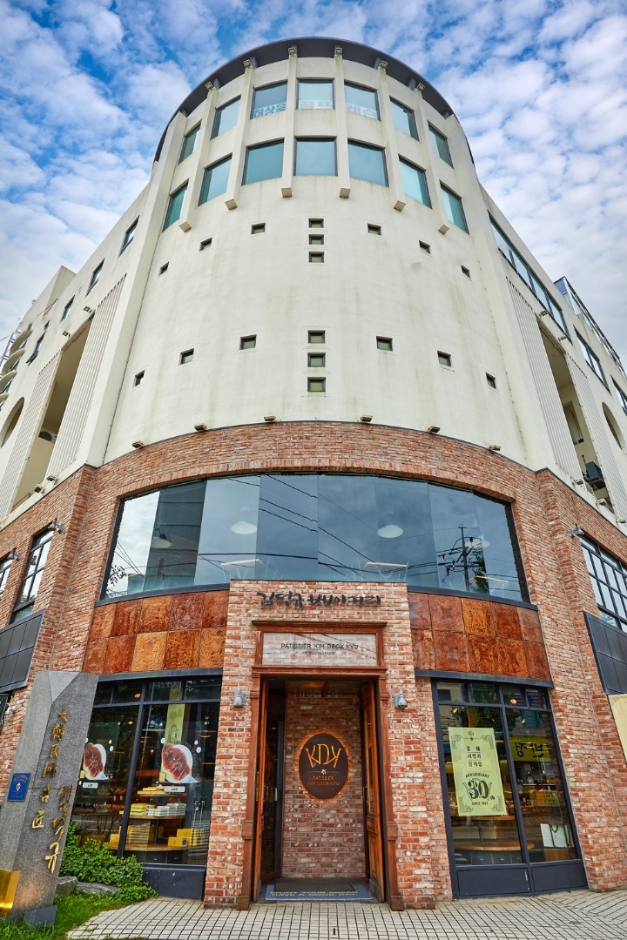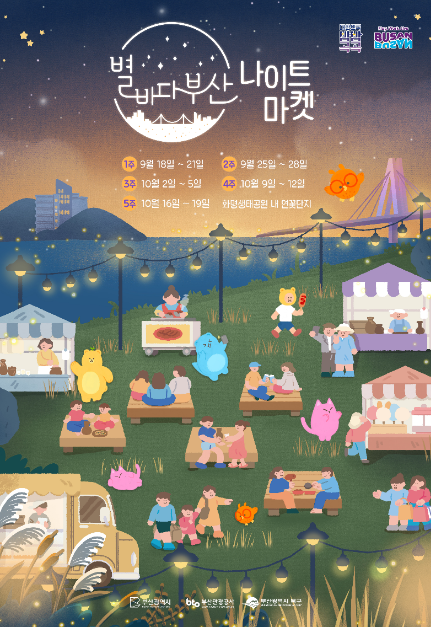Miryang Dwaeji Gukbap (밀양돼지국밥)
18.2Km 2024-02-23
91 Inje-ro, Gimhae-si, Gyeongsangnam-do
Miryang Dwaeji Gukbap is a renowned dwaeji gukbap (pork and rice soup) establishment located in Eobang-dong, Gimhae-si. Recognized among the top 100 recommended restaurants for Gimhae tourism by the city, this eatery has become so popular that visitors often queue to taste its offerings. Standard accompaniments include buchu muchim (chive salad), chili peppers, garlic, and kimchi. In addition to dwaeji gukbap, visitors can enjoy suyuk (boiled pork slices). Nearby attractions include Gimhae Gaya History Park, Gaya Land, and Bunseongsan Mountain.
Subaekdang Dwaejigukbap Gimhae Branch (수백당돼지국밥김해점)
18.3Km 2024-01-24
109 Inje-ro, Gimhae-si, Gyeongsangnam-do
Subaekdang Dwaejigukbap specializes in dwaeji gukbap (pork and rice soup) with boiled pork slices and rice in a broth simmered with pork bones. Its owner is said to have visited 96 pork soup restaurants across the country to study the taste and make the best pork and rice soup. The rich, refreshing broth made by boiling pork backbone for a long time is excellent. This restaurant also serves sundae gukbap (sundae and rice soup) made with premium Berkshire pork. The Maneul Suyuk Baekban (garlic and boiled pork slices set menu), one of its signature items, is made with pork belly that anyone loves and topped with garlic sauce.
Mh Modern House - Homeplus Gimhae Branch [Tax Refund Shop] (MH 모던하우스 홈플러스김해)
18.3Km 2024-04-23
2078, Gimhae-daero, Gimhae-si, Gyeongsangnam-do
-
Homeplus - Gimhae Branch [Tax Refund Shop] (홈플러스 김해)
18.3Km 2024-04-18
2078, Gimhae-daero, Gimhae-si, Gyeongsangnam-do
-
Olive Young - Homeplus Gimhae Branch [Tax Refund Shop] (올리브영 홈플러스김해점)
18.3Km 2024-06-27
2F, 2078, Gimhae-daero, Gimhae-si, Gyeongsangnam-do
-
Kim Deok-kyu Bakery (김덕규베이커리)
18.6Km 2024-01-24
20 Guji-ro, Gimhae-si, Gyeongsangnam-do
Founded by Kim Deok-kyu, who is a recognized confectionery master, this bakery becomes crowded with people as early as 8 a.m. when it opens. The bakery’s most popular item among a lot of different breads is garlic cream bread, which everyone buys at least once. It is the most delicious one in this bakery, made by cutting a long plain bread into pieces and filling them with garlic cream of sweet condensed milk and soft whipped cream. The coconut milk bun, combined with crunchy biscuits and sweet and soft coconut cream, is also its best-seller..
Miryang Arirang Festival (밀양 아리랑대축제)
18.6Km 2025-07-11
Sammun-dong, Miryang-si, Gyeongsangnam-do
+82-55-359-4500
Listed as a UNESCO Intangible Cultural Heritage of Humanity, “Miryang Arirang” is famous for its repetitive lyrical phrase “Look at me.” The Miryang Arirang Festival is held to remember and develop this traditional piece of music. This historic event began as the Miryang Cultural Festival in 1957. The highlight of the festival is the musical Miryanggang Odyssey, where a magnificent fantasy world of light unfolds against the backdrop of Yeongnamnu Pavilion and the Miryanggang River. Visitors can also check out the historical exhibits of “Miryang Arirang” at the Arirang Exhibition, and enjoy other exhibits, activities, and performances like the Miryang Arirang Song Contest and Arirang Experience.
◎ Miryang Arirang
One of Korea’s three major “Arirang,” “Miryang Arirang,” is played to cheerful and upbeat music, but the lyrics contain the tragic story of Arang, the daughter of the Miryang governor.
Dongsang Market (동상시장)
18.6Km 2025-10-23
25 Guji-ro 180beon-gil, Gimhae-si, Gyeongsangnam-do
Formed in 1945, Dongsang Market is a lifestyle-centric traditional market that offers a slew of daily necessities like vegetables, fruits, rice cakes, fishery products, and side dishes, as well as a popular alley specializing in Kalguksu (noodle soup). Designated as a cultural tourism market in 2017, it has since evolved into a vibrant space where traditional Korean culture harmoniously coexists with diverse global cultures. As more foreign workers have begun frequenting the market in recent years, a number of Asian grocery stalls have opened. In particular, vegetables favored by Southeast Asian customers, ritual foods, and Kalguksu (noodle soup) have become local specialties.
Daedong Halmae Guksu ([백년가게]대동할매국수)
18.7Km 2024-02-23
8 Dongnam-ro 45beon-gil, Daedong-myeon, Gimhae-si, Gyeongsangnam-do
Daedong Halmae Guksu, a well-known noodle restaurant in Gimhae, is famous for its signature dish, janchiguksu (banquet noodles). The restaurant serves naturally dried noodles paired with a flavorful broth made from anchovies sourced from the southern coast. Each table is equipped with chili peppers and seasoning sauce, allowing diners to customize their dish to their taste. In addition to janchiguksu, the menu also includes bibimguksu (spicy noodles) and yubuchobap (fried bean curd riceball).
Starry Night in Busan Night Festa
18.8Km 2025-10-23
270 Saengtaegongwon-gil, Buk-gu, Busan
+82-51-710-6948
Starry Night in Busan Night Festa is a themed night market centered on promoting a variety of food content and traditional alcohol, set against the backdrop of the beautiful sunset by the Nakdonggang River and Hwamyeong Eco Park, in tribute to the area’s historical role as the former trading hub known as Gupo Wharf. A wide variety of programs are prepared for all ages, including food vendors, hands-on activities, and performance events. It's an ideal festival to soak up the fall atmosphere in Busan.

![Mh Modern House - Homeplus Gimhae Branch [Tax Refund Shop] (MH 모던하우스 홈플러스김해)](http://tong.visitkorea.or.kr/cms/resource/56/2885956_image2_1.jpg)
![Homeplus - Gimhae Branch [Tax Refund Shop] (홈플러스 김해)](http://tong.visitkorea.or.kr/cms/resource/59/2885959_image2_1.jpg)


 English
English
 한국어
한국어 日本語
日本語 中文(简体)
中文(简体) Deutsch
Deutsch Français
Français Español
Español Русский
Русский